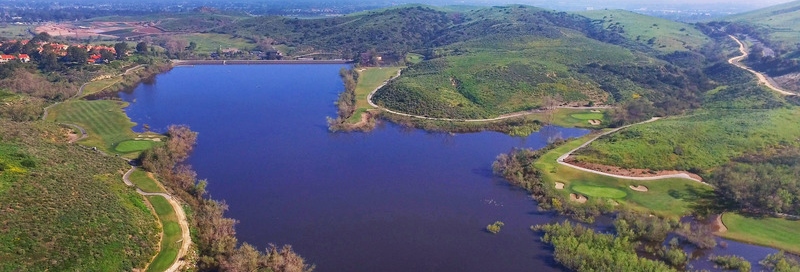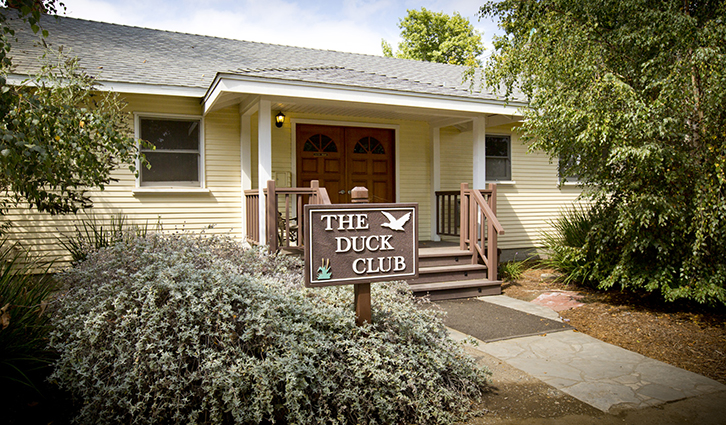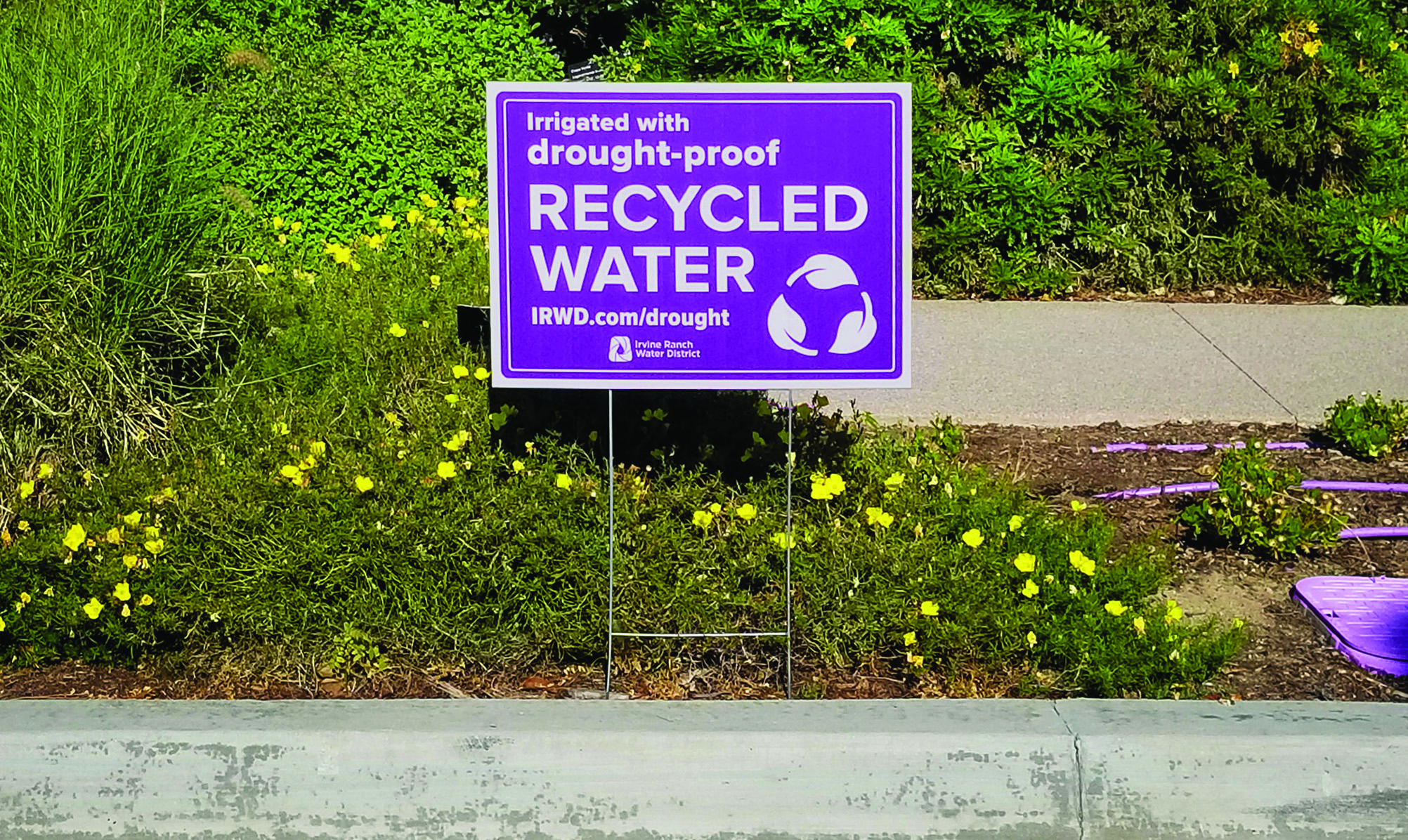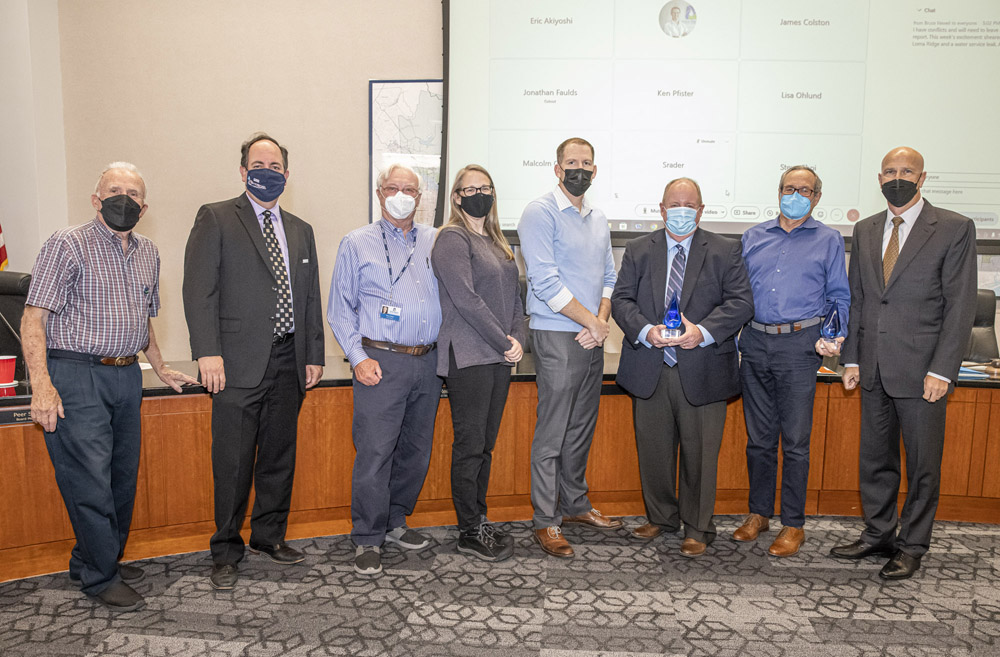Recycled Water Reservoirs
IRWD owns and operates one of the most robust recycled water systems in the nation, with two water recycling plants, hundreds miles of purple pipeline, and thousands of metered customer connections. Vital to this system are four seasonal-storage reservoirs — Rattlesnake, San Joaquin, Sand Canyon and Syphon. The reservoirs are pumped full of recycled water from IRWD’s recycling plants during the cooler, wetter winter months when irrigation demands are low. The water is stored in the reservoirs, and then withdrawn in the summer when demand is high. The reservoirs feature dams, which are inspected regularly and are certified safe. Here’s a look at each of the four reservoirs:
San Joaquin Reservoir

Built in 1966, San Joaquin Reservoir originally was used as a drinking water reservoir by seven cities and water districts. When water quality regulations were enacted prohibiting storage of drinking water in an open reservoir, the facility was drained and sat empty from 1994 through 2004.
Neighbors expressed a desire to restore a water view, and in 2001 IRWD proposed buying the reservoir from the joint owners and converting it to store recycled water. Because recycled water is used for irrigation, toilet flushing, cooling towers, dust control and industrial processes — not for drinking — it can be safely stored in an open reservoir without a cover. After a yearlong conversion project, recycled water began flowing into the reservoir in December 2004. A rededication ceremony was held in February 2005.
This reservoir provides 3,080 acre-feet of seasonal storage for recycled water — a billion gallons. The water is used for landscape irrigation and commercial needs in Irvine, Newport Coast and parts of Newport Beach. [Map]
Syphon Reservoir

Syphon Reservoir, in northern Irvine, began operations in 1949 and historically was used to store irrigation water. It has been integrated into the IRWD recycled water system as a small seasonal storage facility, with a capacity of 535 acre-feet (174 million gallons). An improvement project to upgrade the reservoir to contemporary design and safety standards and increase its capacity to 4,960 acre-feet is in the planning stages. By providing additional storage, this project will allow IRWD to recycle nearly all of the District’s treated sewage, bolster IRWD’s supply reliability, and reduce the region’s dependence on imported water. [Map]
Sand Canyon Reservoir

Sand Canyon Reservoir, adjacent to the Strawberry Farms Golf Club near the I-405 freeway, is used for both seasonal and operational storage. The reservoir has a surface area of 42 acres, an average depth of 18 feet, and storage capacity of 768 acre-feet — 250 million gallons. The watershed area is 6.7 square miles (4,288 acres). [Map]
Rattlesnake Reservoir

Rattlesnake Reservoir was formerly used to supply water for agricultural irrigation. Now a recycled water storage reservoir, it retains and effectively treats most dry- and wet-weather flows. [Map]












